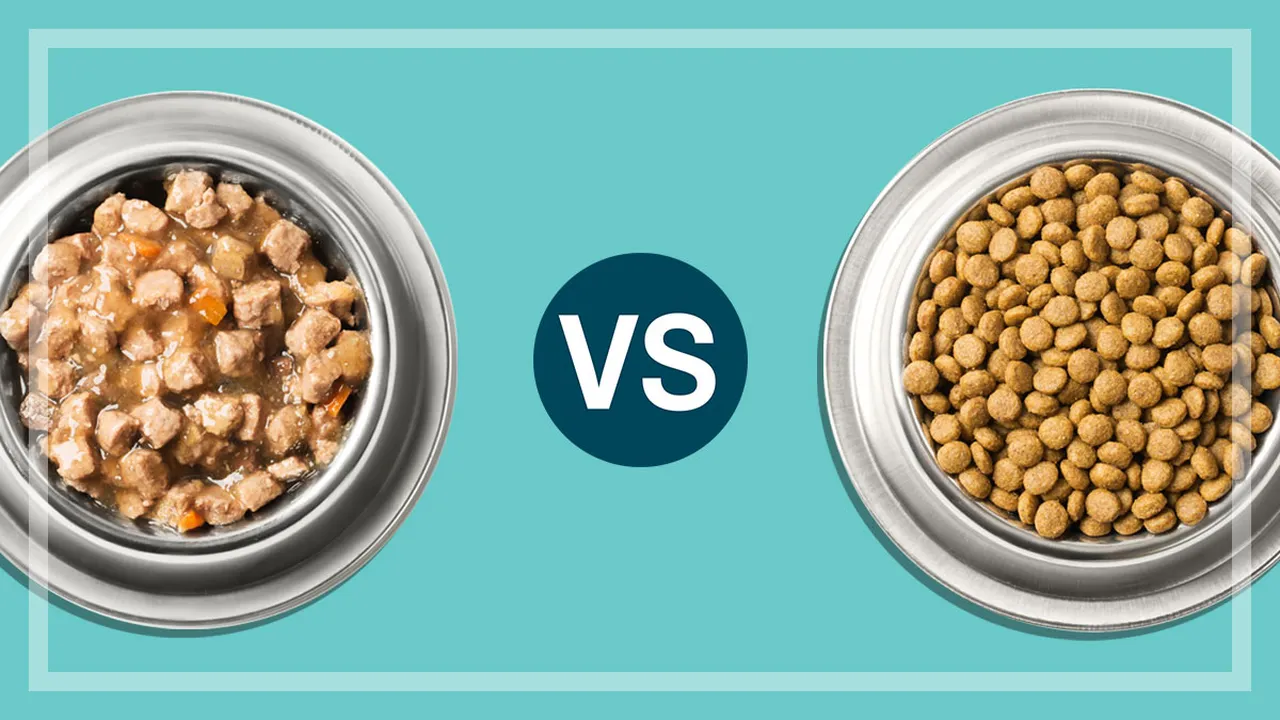Dog Food vs. Cat Food: What's the Difference?
Pet insurance can help you afford veterinary care. This article ranks the top insurance companies. Protect your pet and your wallet with pet insurance.

Understanding Pet Insurance Coverage Options
Okay, let's dive into the world of pet insurance! It's a bit like human health insurance, but for your furry, scaled, or feathered friends. Basically, pet insurance helps cover the costs of unexpected vet bills. Think of it as a safety net for your wallet when Fluffy decides to eat your sock collection or Fido needs emergency surgery. The big question is, what exactly does pet insurance cover? Here’s the lowdown:
- Accidents: This is your go-to coverage for those "oops!" moments. If your pet gets hit by a car, swallows something they shouldn't, or breaks a leg, accident coverage will typically help pay for the vet bills.
- Illnesses: This covers a wide range of diseases and conditions, from common infections like ear infections and urinary tract infections to more serious illnesses like cancer, diabetes, and heart disease.
- Hereditary and Congenital Conditions: Some breeds are prone to certain genetic conditions. If your pet develops a hereditary or congenital condition (one they were born with), this coverage can help with the costs of treatment. Think hip dysplasia in German Shepherds or heart problems in Persians.
- Emergency Care: This is crucial for unexpected emergencies. If your pet needs immediate care due to a life-threatening condition, emergency care coverage can help with the expensive bills.
- Specialty Care: Sometimes, your pet needs to see a specialist, like a dermatologist or cardiologist. Specialty care coverage can help with these costs.
- Surgery: Whether it's a routine surgery like spaying or neutering or a more complex procedure, surgery coverage can help alleviate the financial burden.
- Diagnostic Testing: Figuring out what’s wrong with your pet often involves various tests like blood work, X-rays, MRIs, and ultrasounds. Diagnostic testing coverage helps with these costs.
- Prescription Medications: Just like humans, pets sometimes need prescription medications to treat illnesses or manage chronic conditions. This coverage helps with the costs of those medications.
- Behavioral Therapy: If your pet is struggling with behavioral issues like anxiety or aggression, behavioral therapy can help. Some pet insurance policies cover the costs of these sessions.
- Alternative Therapies: Some pet owners opt for alternative therapies like acupuncture or chiropractic care for their pets. Some policies include coverage for these treatments.
What’s NOT Covered?
Generally, pet insurance policies have exclusions. These typically include:
- Pre-existing Conditions: Any condition your pet had before you enrolled in the insurance policy usually won't be covered.
- Routine or Preventative Care: Most standard policies don’t cover routine vet visits, vaccinations, or dental cleanings (though some companies offer add-on wellness plans).
- Cosmetic Procedures: Procedures like tail docking or ear cropping are generally not covered.
Top 10 Pet Insurance Companies: A Detailed Comparison and Cost Analysis
Alright, let's get down to brass tacks. Here's a rundown of the top 10 pet insurance companies, comparing their plans, coverage, costs, and customer service. We'll also touch on real-world scenarios to help you see how these policies play out. Remember, pricing can vary based on your pet's breed, age, and location, so always get a personalized quote!
- Embrace Pet Insurance:
- Overview: Embrace is known for its comprehensive coverage and diminishing deductible.
- Coverage Highlights: Covers accidents, illnesses, hereditary conditions, and offers a wellness rewards program for routine care.
- Pricing: Average monthly cost for a dog: $30-$50. For a cat: $15-$30.
- Pros: Diminishing deductible (it decreases each year you don't file a claim), excellent customer service, and covers dental illnesses.
- Cons: Wellness rewards program is an add-on, and pre-existing conditions aren't covered.
- Real-World Scenario: Your Labrador develops hip dysplasia. Embrace would cover the diagnostic tests, surgery, and physical therapy, minus your deductible.
- Specific Product Recommendation: Embrace offers a comprehensive plan with customizable deductible and reimbursement options. This allows you to tailor the plan to your budget and coverage needs.
- Pricing Example: For a 3-year-old Golden Retriever in Los Angeles, CA, a policy with a $500 deductible and 80% reimbursement might cost $45/month.
- Healthy Paws Pet Insurance:
- Overview: Healthy Paws is famous for its unlimited lifetime benefits.
- Coverage Highlights: Covers accidents, illnesses, hereditary conditions, and congenital conditions. No upper limits on payouts.
- Pricing: Average monthly cost for a dog: $35-$60. For a cat: $20-$40.
- Pros: Unlimited benefits, straightforward coverage, and quick claims processing.
- Cons: Doesn't cover exam fees, routine care, or pre-existing conditions.
- Real-World Scenario: Your cat is diagnosed with chronic kidney disease. Healthy Paws would cover the ongoing treatment costs, without ever hitting a benefit limit.
- Specific Product Recommendation: Healthy Paws offers a single, comprehensive plan with unlimited benefits. This is ideal for pet owners seeking maximum coverage and peace of mind.
- Pricing Example: For a 5-year-old Maine Coon in New York, NY, a policy with a $250 deductible and 90% reimbursement might cost $55/month.
- Trupanion Pet Insurance:
- Overview: Trupanion is unique because they can pay your vet directly.
- Coverage Highlights: Covers accidents, illnesses, hereditary conditions, and congenital conditions. Offers a per-condition deductible.
- Pricing: Average monthly cost for a dog: $40-$70. For a cat: $25-$45.
- Pros: Can pay vets directly, no payout limits, and covers eligible conditions for life.
- Cons: Can be more expensive than other options, and doesn't cover exam fees.
- Real-World Scenario: Your French Bulldog needs surgery for a torn ACL. Trupanion can pay the vet directly, so you don't have to wait for reimbursement.
- Specific Product Recommendation: Trupanion's comprehensive plan offers lifetime coverage for each condition, with the ability to pay your vet directly.
- Pricing Example: For a 2-year-old French Bulldog in Chicago, IL, a policy with a $200 deductible per condition and 90% reimbursement might cost $65/month.
- Nationwide Pet Insurance:
- Overview: Nationwide offers a range of plans, including wellness options.
- Coverage Highlights: Offers multiple plans, including options that cover routine care. Covers accidents, illnesses, and hereditary conditions.
- Pricing: Average monthly cost for a dog: $35-$65. For a cat: $20-$40.
- Pros: Variety of plans to choose from, including wellness options, and covers some pre-existing conditions after a waiting period.
- Cons: More complex than some other options, and can be pricier for comprehensive coverage.
- Real-World Scenario: You want to cover your cat's annual vaccinations and dental cleanings. Nationwide's wellness plan can help with these costs.
- Specific Product Recommendation: Nationwide offers My Pet Protection with Wellness, which combines accident, illness, and wellness coverage in one plan.
- Pricing Example: For a 4-year-old Siamese cat in Dallas, TX, a policy with a $250 deductible and 90% reimbursement, plus wellness coverage, might cost $50/month.
- Petplan Pet Insurance:
- Overview: Petplan is known for its comprehensive coverage and exclusion of breed-specific and hereditary conditions.
- Coverage Highlights: Covers accidents, illnesses, hereditary conditions, and congenital conditions. Offers customizable deductible and reimbursement options.
- Pricing: Average monthly cost for a dog: $30-$55. For a cat: $18-$35.
- Pros: Comprehensive coverage, customizable options, and covers dental illnesses.
- Cons: Doesn't cover exam fees, and pre-existing conditions aren't covered.
- Real-World Scenario: Your Golden Retriever develops diabetes. Petplan would cover the insulin, vet visits, and monitoring costs, minus your deductible.
- Specific Product Recommendation: Petplan offers a comprehensive plan with customizable deductible, reimbursement, and annual limit options.
- Pricing Example: For a 6-year-old Labrador Retriever in Miami, FL, a policy with a $300 deductible, 80% reimbursement, and a $10,000 annual limit might cost $40/month.
- Figo Pet Insurance:
- Overview: Figo offers a cloud-based app to manage your pet's health records.
- Coverage Highlights: Covers accidents, illnesses, hereditary conditions, and congenital conditions. Offers a 100% reimbursement option.
- Pricing: Average monthly cost for a dog: $32-$58. For a cat: $19-$38.
- Pros: Cloud-based app for managing records, 100% reimbursement option, and covers exam fees in some states.
- Cons: Can be more expensive with higher reimbursement levels, and pre-existing conditions aren't covered.
- Real-World Scenario: You need to quickly access your pet's vaccination records while traveling. Figo's app makes it easy to access this information.
- Specific Product Recommendation: Figo offers three levels of coverage: Essential, Preferred, and Ultimate. The Ultimate plan offers the most comprehensive coverage, including 100% reimbursement.
- Pricing Example: For a 1-year-old German Shepherd in Denver, CO, an Ultimate plan with a $200 deductible and 100% reimbursement might cost $60/month.
- Pumpkin Pet Insurance:
- Overview: Pumpkin offers coverage for puppies and kittens, including preventative care packs.
- Coverage Highlights: Covers accidents, illnesses, hereditary conditions, and offers preventative care packs for vaccinations and wellness exams.
- Pricing: Average monthly cost for a dog: $33-$62. For a cat: $20-$40.
- Pros: Coverage for puppies and kittens, preventative care packs, and covers behavioral issues.
- Cons: Preventative care packs are an add-on, and pre-existing conditions aren't covered.
- Real-World Scenario: You want to cover your puppy's vaccinations and wellness exams. Pumpkin's preventative care pack can help with these costs.
- Specific Product Recommendation: Pumpkin offers a comprehensive plan with the option to add a preventative care pack, which covers annual wellness exams and vaccines.
- Pricing Example: For a 6-month-old puppy in Seattle, WA, a policy with a $250 deductible, 90% reimbursement, and the preventative care pack might cost $55/month.
- Spot Pet Insurance:
- Overview: Spot offers customizable plans with multiple deductible and reimbursement options.
- Coverage Highlights: Covers accidents, illnesses, hereditary conditions, and offers multiple deductible and reimbursement options.
- Pricing: Average monthly cost for a dog: $31-$57. For a cat: $18-$37.
- Pros: Customizable plans, multiple deductible and reimbursement options, and covers microchip implantation.
- Cons: Can be confusing to navigate the different options, and pre-existing conditions aren't covered.
- Real-World Scenario: You want to choose a lower deductible to cover more of your pet's vet bills. Spot offers multiple deductible options to fit your budget.
- Specific Product Recommendation: Spot offers comprehensive plans with customizable deductible, reimbursement, and annual limit options.
- Pricing Example: For a 2-year-old mixed-breed dog in Phoenix, AZ, a policy with a $500 deductible, 80% reimbursement, and a $5,000 annual limit might cost $35/month.
- ASPCA Pet Health Insurance:
- Overview: ASPCA Pet Health Insurance offers a variety of plans and add-ons, including wellness options.
- Coverage Highlights: Offers multiple plans and add-ons, including options that cover routine care. Covers accidents, illnesses, and hereditary conditions.
- Pricing: Average monthly cost for a dog: $34-$63. For a cat: $21-$42.
- Pros: Variety of plans and add-ons, including wellness options, and covers some pre-existing conditions after a waiting period.
- Cons: More complex than some other options, and can be pricier for comprehensive coverage.
- Real-World Scenario: You want to cover your cat's annual vaccinations and dental cleanings. ASPCA Pet Health Insurance's wellness plan can help with these costs.
- Specific Product Recommendation: ASPCA Pet Health Insurance offers Complete Coverage, which combines accident, illness, and wellness coverage in one plan.
- Pricing Example: For a 3-year-old Persian cat in Atlanta, GA, a policy with a $250 deductible and 90% reimbursement, plus wellness coverage, might cost $52/month.
- Lemonade Pet Insurance:
- Overview: Lemonade is known for its tech-driven approach and fast claims processing.
- Coverage Highlights: Covers accidents, illnesses, hereditary conditions, and offers add-ons for preventative care and physical therapy.
- Pricing: Average monthly cost for a dog: $29-$54. For a cat: $17-$34.
- Pros: Tech-driven approach, fast claims processing, and offers add-ons for preventative care and physical therapy.
- Cons: Limited availability in some states, and pre-existing conditions aren't covered.
- Real-World Scenario: Your dog needs physical therapy after surgery. Lemonade's physical therapy add-on can help with these costs.
- Specific Product Recommendation: Lemonade offers a comprehensive plan with the option to add preventative care and physical therapy coverage.
- Pricing Example: For a 4-year-old Beagle in Austin, TX, a policy with a $250 deductible, 80% reimbursement, and the physical therapy add-on might cost $48/month.
How to Choose the Best Pet Insurance Plan for Your Needs
Choosing the right pet insurance can feel overwhelming, but breaking it down into steps makes it easier. Here's a guide to help you navigate the process:
- Assess Your Pet's Needs: Consider your pet's breed, age, and pre-existing conditions. Some breeds are prone to certain health issues, so you might want a policy that covers hereditary conditions.
- Determine Your Budget: Pet insurance premiums can vary widely. Decide how much you're willing to spend each month.
- Compare Quotes: Get quotes from multiple insurance companies. Pay attention to the coverage, deductible, reimbursement rate, and annual limit.
- Read the Fine Print: Understand what's covered and what's excluded. Pay attention to waiting periods and pre-existing condition exclusions.
- Consider Add-ons: Decide if you want add-ons like wellness coverage or dental coverage.
- Check Customer Reviews: See what other pet owners are saying about the insurance company's customer service and claims processing.
- Choose a Plan: Select the plan that best meets your pet's needs and your budget.
Understanding Deductibles and Reimbursement Rates: Maximizing Your Pet Insurance Benefits
Let’s talk about some key terms: deductibles and reimbursement rates. These are crucial for understanding how your pet insurance policy works and how much you'll actually pay out-of-pocket.
- Deductible: This is the amount you pay before your insurance coverage kicks in. It can be an annual deductible (you pay it once per year) or a per-condition deductible (you pay it for each separate condition). Lower deductibles mean higher premiums, and vice versa.
- Reimbursement Rate: This is the percentage of the vet bill that the insurance company will reimburse you after you've met your deductible. Common reimbursement rates are 70%, 80%, and 90%. Higher reimbursement rates mean higher premiums.
Maximizing Your Benefits:
- Choose the Right Deductible: If you can afford to pay a higher deductible, you'll save money on your monthly premiums. However, make sure you can comfortably afford the deductible if your pet needs expensive treatment.
- Select the Right Reimbursement Rate: A higher reimbursement rate means you'll pay less out-of-pocket when your pet needs vet care. However, it also means higher premiums.
- Consider Your Pet's Health History: If your pet is prone to certain health issues, a lower deductible and higher reimbursement rate might be worth the extra cost.
Real-Life Pet Insurance Scenarios and Cost Breakdowns
Let's look at some real-life scenarios to see how pet insurance can help you save money:
Scenario 1: Dog Swallows a Sock
- Pet: Labrador Retriever
- Condition: Foreign body ingestion (sock)
- Vet Bill: $2,000 (includes X-rays, surgery, and hospitalization)
- Insurance Plan: $500 deductible, 80% reimbursement
- Out-of-Pocket Cost: $500 (deductible) + 20% of $1,500 = $800
- Insurance Pays: $1,200
Scenario 2: Cat Diagnosed with Diabetes
- Pet: Siamese Cat
- Condition: Diabetes
- Vet Bill: $5,000 (includes diagnostic tests, insulin, and ongoing monitoring)
- Insurance Plan: $250 deductible, 90% reimbursement
- Out-of-Pocket Cost: $250 (deductible) + 10% of $4,750 = $725
- Insurance Pays: $4,275
Scenario 3: Puppy Breaks a Leg
- Pet: Golden Retriever Puppy
- Condition: Fractured leg
- Vet Bill: $3,000 (includes surgery, casting, and follow-up visits)
- Insurance Plan: $300 deductible, 80% reimbursement
- Out-of-Pocket Cost: $300 (deductible) + 20% of $2,700 = $840
- Insurance Pays: $2,160
Debunking Common Myths About Pet Insurance
There are a lot of misconceptions floating around about pet insurance. Let’s clear up some common myths:
- Myth: Pet insurance is too expensive.
- Reality: While premiums can vary, pet insurance can save you thousands of dollars in unexpected vet bills.
- Myth: My pet is healthy, so I don't need insurance.
- Reality: Accidents and illnesses can happen to any pet, regardless of their age or health.
- Myth: Pet insurance doesn't cover pre-existing conditions.
- Reality: This is generally true, but some companies may cover curable pre-existing conditions after a waiting period.
- Myth: Filing a claim will increase my premiums.
- Reality: Some companies may increase premiums after a claim, but others don't. It's important to ask about this when choosing a plan.
- Myth: All pet insurance plans are the same.
- Reality: Plans vary widely in terms of coverage, deductible, reimbursement rate, and annual limit. It's important to compare plans carefully.
The Future of Pet Insurance: Trends and Innovations
The pet insurance industry is constantly evolving. Here are some trends and innovations to watch for:
- Telehealth: More insurance companies are offering telehealth services, allowing pet owners to consult with vets remotely.
- Customizable Plans: Insurance companies are offering more customizable plans to meet the specific needs of pet owners.
- Wearable Technology: Wearable devices for pets are becoming more popular, providing data on their activity levels and health. This data could be used to personalize insurance plans.
- AI and Machine Learning: AI and machine learning are being used to automate claims processing and detect fraud.
- Embedded Insurance: Some companies are offering pet insurance embedded within other products, such as pet food or pet supplies.
Frequently Asked Questions About Pet Insurance (FAQ)
- Q: When should I get pet insurance?
- A: The sooner, the better! It's best to get pet insurance while your pet is young and healthy, before any pre-existing conditions develop.
- Q: What's the difference between accident-only and comprehensive coverage?
- A: Accident-only coverage covers accidents, while comprehensive coverage covers both accidents and illnesses.
- Q: Does pet insurance cover routine care?
- A: Most standard policies don't cover routine care, but some companies offer add-on wellness plans.
- Q: How do I file a claim?
- A: You'll typically need to submit a claim form and your vet bill to the insurance company.
- Q: How long does it take to get reimbursed?
- A: Reimbursement times vary, but most companies aim to process claims within a few weeks.
:max_bytes(150000):strip_icc()/277019-baked-pork-chops-with-cream-of-mushroom-soup-DDMFS-beauty-4x3-BG-7505-5762b731cf30447d9cbbbbbf387beafa.jpg)






